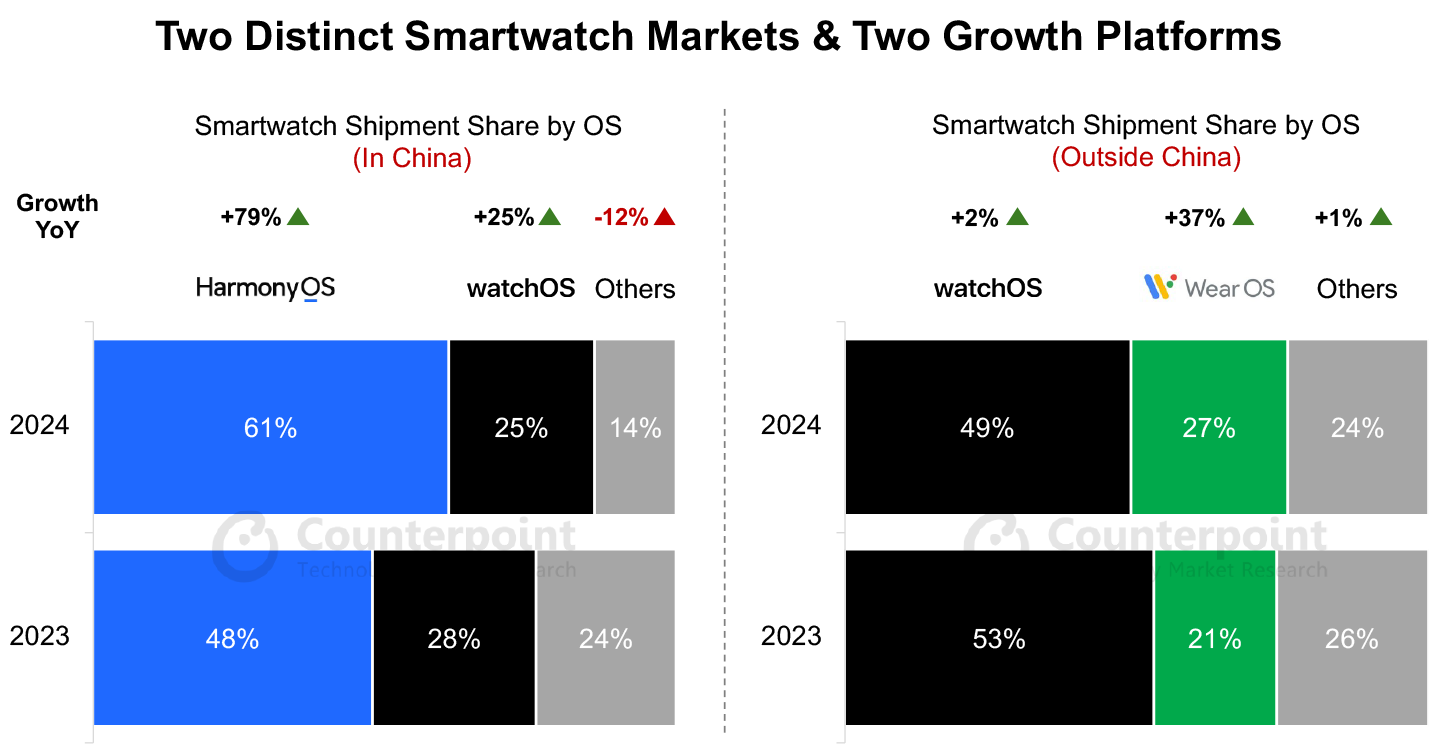In a nutshell: Apple has long reigned as the leader in smartwatches. However, recent market analysis indicates that Google’s Wear OS platform is gradually eroding Apple’s dominant position.
According to the latest report from research firm Counterpoint on the smartwatch landscape, Wear OS devices are projected to capture 27 percent of the global market in 2024, up from 21 percent in 2023. While still trailing Apple’s watchOS, which is expected to hold 49 percent this year (down from 53 percent), the six percent gain for Wear OS is significant.
The resurgence of Wear OS has been years in the making. Previously, the platform was virtually abandoned by Google after a long period of stagnation. However, a renewed commitment from the search giant, along with a strategic partnership with Samsung, has revitalized the wearable operating system.
Reports suggest that the two brands are collaborating on Wear OS 5, based on Android 14, with a potential release later this year.
The growth trajectory of Wear OS is being driven by a wave of powerful new smartwatch models running the platform. Counterpoint highlights releases such as the Google Pixel Watch, OnePlus Watch 2, and the Samsung Galaxy Watch 6 series as key contributors to Wear OS adoption.

However, the wearable market is much more fragmented beyond just Apple and Google’s software platforms. According to the data, fitness tracker giants like Garmin, along with players like Amazfit, make up around 26 percent of the “advanced” smartwatch space, which includes devices with app store functionality.
Turning to the chip market, Apple and Samsung control two-thirds of the advanced smartwatch chip market. However, Hengxuan and Qualcomm are poised for double-digit growth in 2024. Qualcomm will benefit from new W5+ Gen 1 and W5100 processors, while Hengxuan will gain from popular Huawei and Xiaomi wearables in China.
Regarding China, the domestic market presents a different scenario. Huawei’s HarmonyOS dominates the smartwatch platform with a 48 percent share, expected to grow to 61 percent this year. Apple holds just 28 percent of the Chinese market, while Wear OS has made little impact in the region so far.
Another interesting trend is emerging around power efficiency. According to Counterpoint, brands are starting to adopt a dual-OS, dual-chip strategy that combines a high-end processor with a low-power co-processor. This allows smartwatches to seamlessly switch between the two environments depending on the task at hand, optimizing battery life.
The new OnePlus Watch 2 serves as a prime example, with claimed runtimes as high as 48 hours under heavy use and up to 12 days in a special power-saving mode.
Image credit: Emiliano Cicero

